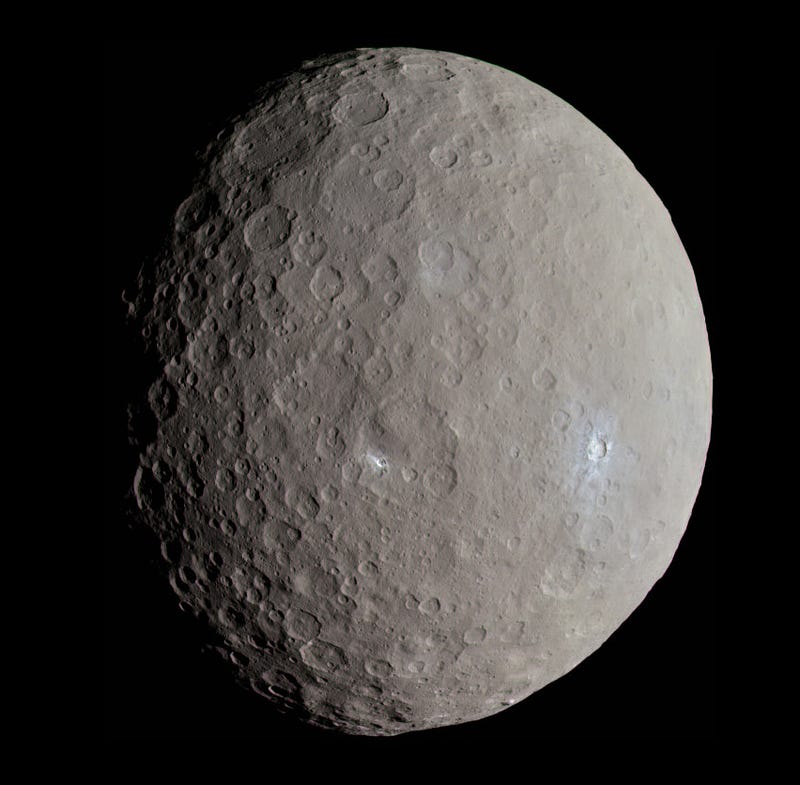The Journey of Ceres: From the Outer Solar System to the Asteroid Belt
Written on
The Formation and Migration of Ceres
Understanding Ceres’ atmospheric composition has led scientists to propose that this dwarf planet originated beyond Saturn before migrating inward into the asteroid belt. Recent simulations suggest that the dynamics of the early solar system played a significant role in this process.

The location of an object in the solar system significantly influences its interaction with solar radiation. For Earth, this interaction can result in vibrant auroras, while for comets, proximity to the Sun creates spectacular tails. A larger celestial body moving from the outer reaches toward the inner solar system experiences varying solar effects, which is essential for understanding Ceres.
A recent study published in the journal Icarus reveals that the thin, misty atmosphere of Ceres, rich in ammonia, likely indicates its formation in the outer solar system. The tumultuous environment during the early days of planetary formation involved intense competition for space among massive planets such as Jupiter and Saturn, while ice giants like Uranus and Neptune were either pushed outward or expelled from the solar system entirely. Smaller celestial bodies, including Ceres, were subjected to gravitational forces that caused chaotic movements.
Section 1.1 Ceres' Atmospheric Composition
Observations from NASA's Dawn mission indicate that Ceres has a significant amount of ammonia in its atmosphere, which is influenced by solar warmth. This mist, composed of water and ammonia, emerges from below the surface, alongside icy deposits found in the planet's craters. Typically, bodies in the asteroid belt lack such icy features, raising questions about Ceres' origins.
Subsection 1.1.1 Simulation Findings
To explore Ceres' formation, researchers utilized advanced computer models, starting with the premise that Ceres was a planetesimal—essentially a building block of larger planetary bodies. Lead author Rafael Ribeiro de Sousa noted that their simulations revealed a highly chaotic environment during the formation of giant planets, characterized by significant collisions and the ejection of planetary bodies from the solar system.
In addition, gravitational disturbances caused by massive celestial bodies scattered Ceres-like objects throughout the solar system. Some of these objects likely made their way to the asteroid belt, establishing stable orbits that could withstand various cosmic events.
The study also indicated that there were potentially 3,600 objects similar to Ceres beyond Saturn's orbit during the early solar system. This statistical analysis supports the theory that Ceres was formed farther out and later migrated inward due to the chaotic conditions. Moreover, the chemical signatures of Ceres align closely with those of objects originating beyond the Frost Line, reinforcing the idea that it could not have formed in the asteroid belt.
Explore the fascinating journey of Ceres in the video titled "Ceres: The Closest And Forgotten Dwarf Planet Holds The Origin of Our Solar System." This video delves into the intriguing findings about Ceres' formation and its significance in understanding the solar system.
Additionally, check out "1 Ceres: First Asteroid, Only Inner Dwarf Planet" for a comprehensive overview of Ceres, its unique characteristics, and its place within the larger context of our solar system.
Further Reading
For more information on this research, refer to the Agência FAPESP press release and the article “Dynamical origin of the Dwarf Planet Ceres” by Rafael Ribeiro de Sousa et al., published on March 25, 2022, in Icarus. This article provides deeper insights into the dynamics of Ceres' formation and migration.